5. Freddy Got Fingered
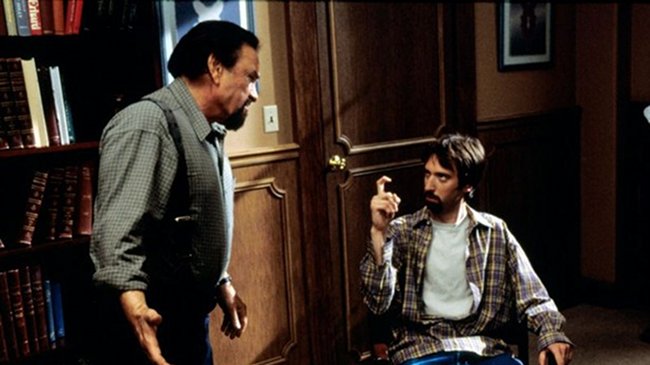
Often termed by critics as an “extreme gross-out comedy,” Tom Green’s R-rated “Freddy Got Fingered” from 2001 makes this top-ten list as well. Its story follows the elaborate and manic, mainly purposeless life of a 28-year-old American slacker. Tom Green partially wrote, directed, and starred in this film, yet his character of choice is truly and pointedly pathetic.
Green’s protagonist has trouble holding down a job, and all he wants to be is a cartoonist, but his designs are terrible. A running dispute with his father features as the main storyline of the film, as Green’s character quits his job and moves back home. Their pointless yet joke-spattered animosity just isn’t enough to impress the critics, however.
At the time of its release, “Freddy Got Fingered” was ubiquitously hated by reviewers, whose ratings averaged around 15%. That rating is up for debate these days, though! Over the past 17 years, this film has gotten increasingly positive accolades from new critics looking back.
Like “Showgirls,” “Freddy Got Fingered” may seem like just a demented flick, but some people truly love it, and it also garnered a significant cult following. “Freddy Got Fingered” still won five Razzies in 2001, however, including Worst Screenplay, Worst Director, and Worst Actor, all of which fell on Tom Green himself. This film really is quite the experience.
4. Rambo: First Blood Part II
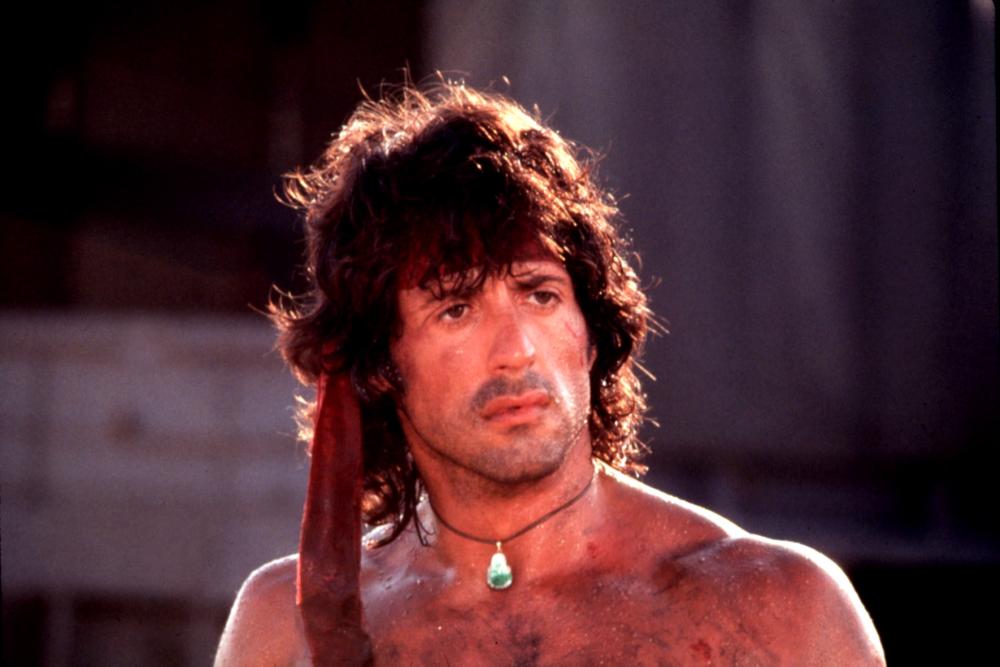
As the second film in the Rambo franchise, “First Blood Part II” broke box office records when it came out. It has also grossed hundreds of millions worldwide through DVD release alone, so you can tell that this story is loved by many. Unfortunately, it was not so loved in 1985 by the critics.
Whether it was the tired tale about prisoners of the Vietnam War or the generic, politically-infused script by James Cameron and Sylvester Stallone, something about “First Blood Part II” felt like a let-down from “Rambo: First Blood.” In fact, ratings over the Rambo franchise drastically fell to around 30% with the second film, and they stayed in the low- to mid-30s, percentagewise, until the franchise ended. In contrast, the first film got high ratings of no lower than 80%. “First Blood Part II” was only the beginning of a disappointing franchise performance over time, in the critics’ eyes.
At the Razzies in 1985, “First Blood Part II” won five awards, most of them featuring Sylvester Stallone (Worst Actor, Worst Screenplay, and Worst Original Song), just like what happened with “Freddy Got Fingered” and Tom Green. Still, many people love the Rambo films, and they reclaim “First Blood Part II” as essential in that story arch. The film itself is packed with action, sweaty Stallone, and gunfire. In the end, it’s so bad it’s awesome.
“First Blood Part II” is also counted in Razzie founder John J.B. Wilson’s book “The Official Razzie Movie Guide” as one of the 100 Most Enjoyably Bad Films Ever Made, to give you an idea.
3. Catwoman
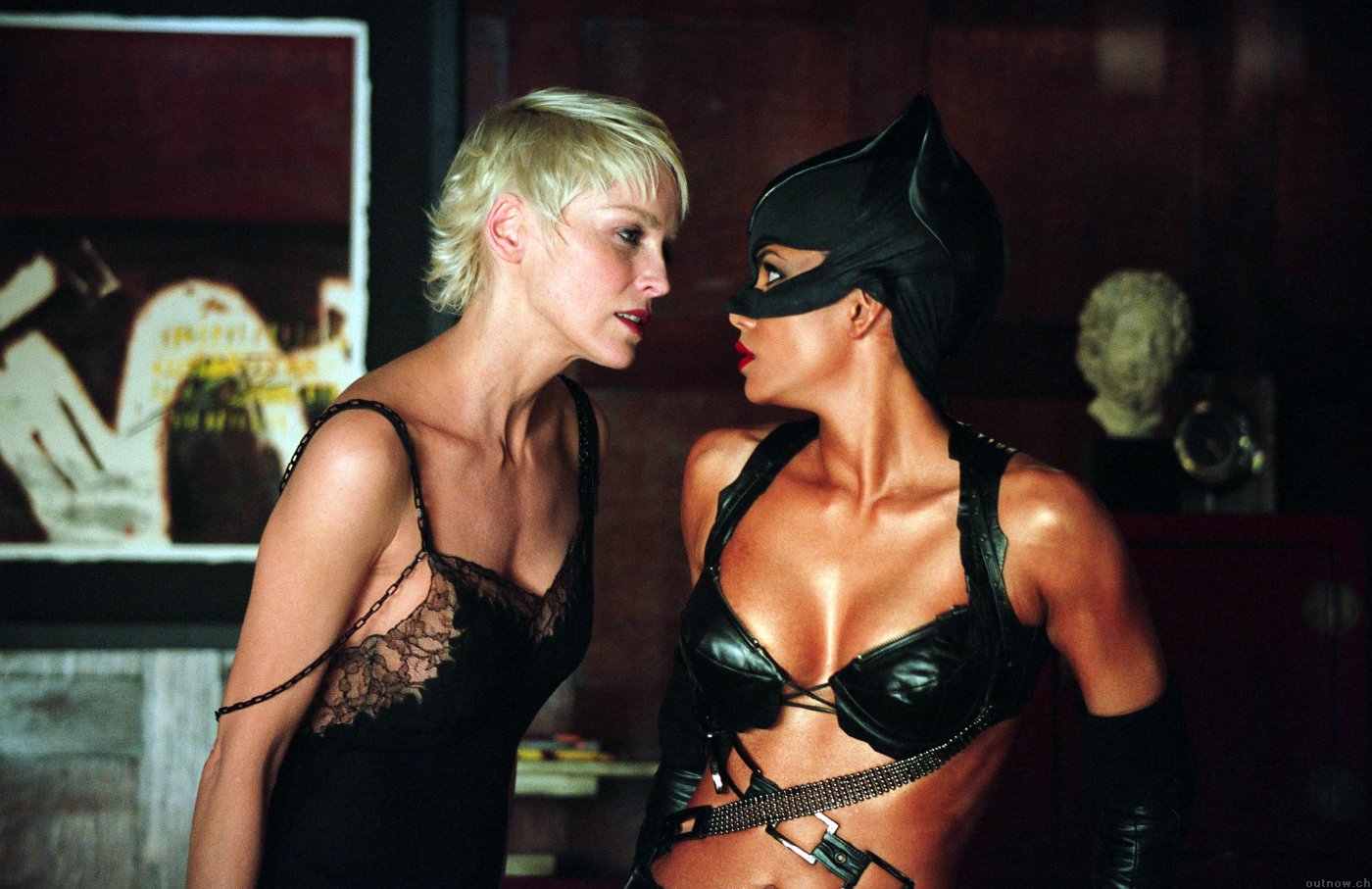
Going against basically everything that gave Catwoman her background in the original comics, Warner Bros. “Catwoman” in 2004 gets it right only in its protagonist’s sexual allure. Halle Berry’s performance in this film is redeemable only in the fact that she looks great in her costume and gave 100% to her role, whether she’s playing the shy Patience or the nimble and agile Catwoman.
Unfortunately, Warner Bros. didn’t give Berry much to work with. The script is weak, and they changed Catwoman’s past, her origins as a super hero/villain, and her attitude towards crime. What they left this badass character with was Halle Berry in a skimpy suit, workin’ it the best she could against a superficial villain: a cosmetic corporation.
Relatively little-known French director Pitof (Jean-Christophe “Pitof” Comar) lead the production of this film, but his work with special effects and digital cinematography seem to be his draw to “Catwoman.”
Truly, “Catwoman” would be nothing without its special effects because Halle Berry’s movements as the feline fighter rely heavily on computer generated assistance. And honestly, although the film would be nothing without these effects, they aren’t really even that good.
Pitof and Warner Bros. struggle to build a believable reality in “Catwoman,” and the critics picked up on that failure quickly. Hardly any ratings above 20% exist for this film, even by those who attempt feminist re-readings of the characters, cinematography, and plot. What we’re left with is a box office bomb that critics hate and viewers varyingly still enjoy.
It won four Razzies, including Worst Actress (Berry, despite all that she gave the role), and the star actually attended to accept her award in person. In her acceptance speech, she held her Best Actress Oscar for “Monster’s Ball” in one hand while thanking Warner Bros. for putting her in such a “piece of shit, god-awful movie” because it allowed her to win the Best and the Worst Actress awards from two different awards circuits in the same year—truly a unique accomplishment.
2. The Last Airbender
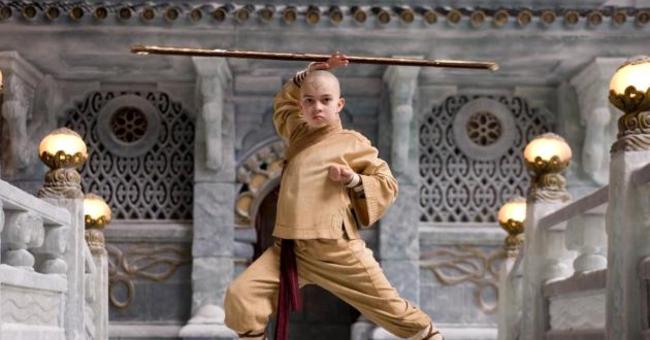
Everyone who loved the original television series “Avatar: The Last Airbender” wanted the 2010 live-action film version to do well. With M. Night Shyamalan on board as director, it seemed like the film would be incredible—especially when it was announced that it would be his most expensive film! Unfortunately, these reasons are probably why many people were so disappointed in the film version and equally, why the production agency decided not to make any sequels to it anytime soon.
“The Last Airbender” was a big project that Shyamalan started with personal stake, as his daughter wanted to be Katara for Halloween one year, thus instigating his inspiration. It’s crazy to think of how badly the film was received with all of these positive traits of production put together. Critics, however, harshly tear “The Last Airbender” apart with every review. Roger Ebert even gave the film a literal half-star review, while Rotten Tomatoes aggregates a 6% rating.
When critics explain their thought process, it often focuses on the weak, stiff script as the worst element of the film. Some manage to (partially) commend Shyamalan for his work with children’s film and his attempts with special effects, but it comes back to a story with no backbone that can’t hold up.
“The Last Airbender” ultimately won five Razzies, including Worst Picture, and it served as the motivation for (and champion of) one of the Razzies’ most intriguing made-up categories: “Worst Eye-Gouging Mis-Use of 3D.”
1. 50 Shades of Grey
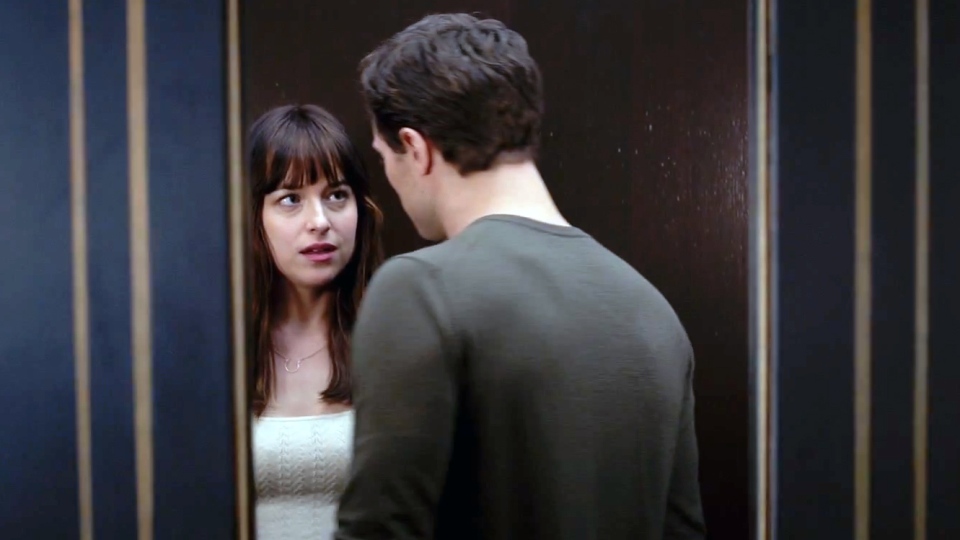
“50 Shades of Grey” is one of the most notorious book and film franchises from the twenty-first century, and for good reason. It features sexual awakening as its plot, but it does so 2K10-style, which means BDSM in crash-course. One huge problem with the films (and with the books, of course) is that the BDSM relationship depicted is fairly abusive and not in line with earnestly respectful, consensual, and autonomous kinky sexuality. That, and the films are just bad.
Interestingly, the idea for the “50 Shades of Grey” books came from a reworking of the Twilight Saga (which is not surprising if you acknowledge the primary relationship in “Twilight” as abusive on some level). The author developed a fan fiction version of Edward and Bella’s love life where there was much more power play involved in their sexual relationship; the idea caught hold like wild-fire, and soon people were demanding more of these stories about a high-class, influential white man seducing a mousy, seemingly-innocent white girl.
In the first film, “50 Shades of Grey,” the young woman meets a corporate bad-boy and falls in love with his domineering sexuality. They encounter problems with self-awareness and mutual-benefit in their relationship, and they have kinky sex a lot. That’s the gist of the film, and it doesn’t get more complex than that. Regrettably, with “50 Shades of Grey” being a best-selling book, the box office performance for this first film was highly impressive.
Critics debate over this film, with some calling it the worst Hollywood has to offer while others admire it for its freshness. The film’s awards can function as a tie-breaker to this critical impasse, thankfully. Several awards circuits nominated “50 Shades of Grey,” and most of the nominations featured its original song, but the film lost in every circuit except for the Golden Raspberry Awards, where it “won” five out of its six nominations (including Best Picture for 2015).
In the end, the Razzies speak the truth about popular films. They refuse to let terrible excuses for art go unacknowledged, and they infuse these bland films with notoriety about their failings for eternity.